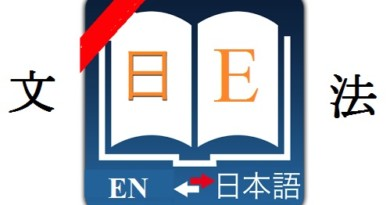The passive voice in Japanese
In Japanese as well as in many languages, there are many cases in which the subject is affected by an action or a situation. That’s when we need to use passive voice. In this post, Learn Japanese daily will introduce to you usage and structure of passive voice in Japanese.

Contents
JLPT Level :
The passive voice in Japanese is introduced in : Grammar N4 and Grammar N3
How to form passive voice in japanese
Verb group 1: (godan verb) : change column ending with / u / in dictionary form to column / a / then add れ る. Examples : 買う(かう)→ 買われる(かわれる) : is bought . 飲む(のむ)→ 飲まれる(のまれる): is drunk .
Verb group 2 (ichidan verb): remove る and add られる. Examples : 食べる(たべる)→ 食べられる is eaten. 見る(みる)→ みられる : is seen
Verb group 3 : 来 る will be changed to こられる. する will be changed to される
When to use ?
Sentence pattern 1 : NがVられる
Meaning :
N is / is affected by the verb V. This sentence pattern is used when the subject receives or is effected by an action (V). This sentence pattern is Often used in information sentences, when the subject of the action is not identified, or does not need to be specified.
Examples :
この本の説明は詳しく書かれていません
このほんのせつめいはくわしくかかれていません
The description of this book is not described in detail
入学式は、このホールで行われます。
にゅうがくしきは、このホールでおこなわれます。
The entrance ceremony will be held in this hall.
この建物は300年前に建てられました。
このたてものは300ねんまえにたてられました。
This building was built 300 years ago.
Sentence pattern 2 : N1がN2に(よって/から)Vられる
Meaning :
The subject N1 is affected by action V which is taken by N2 (the subject of action) .
When we want to mention the one who performs the action (that affected the subject of the sentence), we just need to add the subject of the action (N) before に + the verb in the passive.
This sentence pattern is often used in description sentence or information sentence. The subject of the action is marked with に or によって. によ て is used when the subject of action (N2) makes works, architectural works, construction works… or used in formal situations.
から can also be used to mark the subject. However に is used more.
Examples :
漫画はよく若いサラリーマンに読まれている
まんがは よく わかいサラリーマンによまれている
Manga is often read by a young salary man.
そのお寺は地元の住民によって建てられた
そのおてらは じもとのしゅうみん によって たてられた
That temple was built by local residents.
夜中に騒いだから、近所の人に注意されてしまった
よなかに さわいだから、きんじょのひとに ちゅうい されてしました
Because I made noise at midnight, I was blamed by my neighbors.
兄に殴られた
あにになぐられた
I was beaten by my brother.
Sentence pattern 3 : Indirect passive
Meaning and usage
Use when subject is annoyed by a situation. In this sentence, only に is used, not によって or から
Examples:
忙しい時に、客に来られて、何もできなかった
いそがしいときに、きゃくにこられて、なにもできなかった
During the busy time, I was visited by the guests, so I couldn’t do anything
雨に降られて、服がぬれてしまった。
あめにふられて、ふくがぬれてしまった。
I was got wet with the rain, so my clothes were wet.
Sentence pattern4 : N1がN2にN3をVられる
Meaning and usage:
In this sentence, N1 is the subject of the sentence, N2 is the subject of action. N3 is object affected by verbs V. In this pattern N3 is often a noun owned by N1. This sentence pattern is used to express the meaning: Because action V impacts on object N3, the subject N1 get troublesome…
Examples:
私は電車の中で、知らない人に足を踏まれた
わたしは でんしゃのなかで、しらないひとに あしをふまれた
My foot were stepped on by a stranger when I was on the train.
先生に発音を褒められて、日本語が好きになった
せんせいに はつおんをほめられて、にほんごがすきになった
I was praised by the teacher for good pronunciation, so I became interested in Japanese
Also in many cases N3 is not necessarily owned by N1:
狭い部屋でタバコを吸われて、本当に気持ち悪かった.
せまいへやのなかで タバコをすわれて、ほんとうに きもちわるかった
In the small room, being smoked by strangers (affecting me), is really annoying
次々に料理を出されて、とても食べきれなかった
つぎつぎに りょうりをだされて、とてもたべらきれなかった
The food was brought out in a row, I really couldn’t eat it all.
With Japanese passive sentences of this type, the subject of action is often unspoken. If mentioned, it will be placed after に. Do not use に よ っ て or か ら for this case.
Above is the general knowledge about passive voice in Japanese. Let’s learn other grammar structures in the category : Japanese Grammar Dictionary
